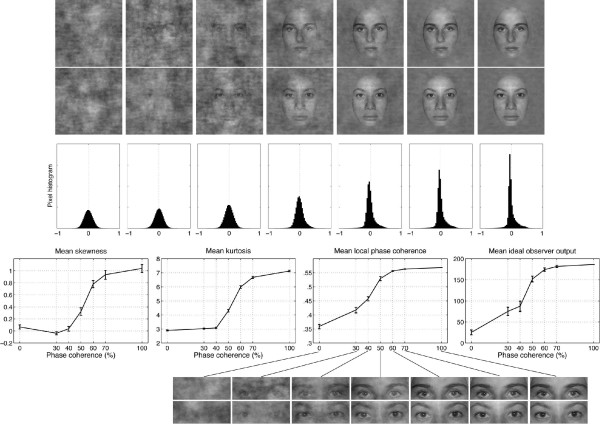Figure 2.
Examples of stimuli used in the EEG experiment. The first two rows show the 14 stimuli presented to one observer during the first block of the experiment. The observer discriminated the same two faces during the whole experiment. Phase coherence varied from 0% (left side) to 100% (right side) in six equal steps. Note different noise fields were mixed with the original image at each level of phase coherence, and therefore the task could not be performed based on the spatial characteristics of the noise. Histograms in the third row show the distribution of pixel contrasts averaged across all stimuli seen by this observer at each level of phase coherence. Starting with a Gaussian distribution (left side), the pixel histograms become increasingly skewed and kurtotic with increasing phase coherence (right side). Note that the y-axes on the histograms are all the same. This relationship is depicted in the last row, showing the mean skewness (left), and mean kurtosis (middle), as a function of phase coherence. Mean local phase coherence and mean ideal observer output were computed in the eye area depicted at the bottom of the figure. The error bars correspond to 95% confidence intervals.

